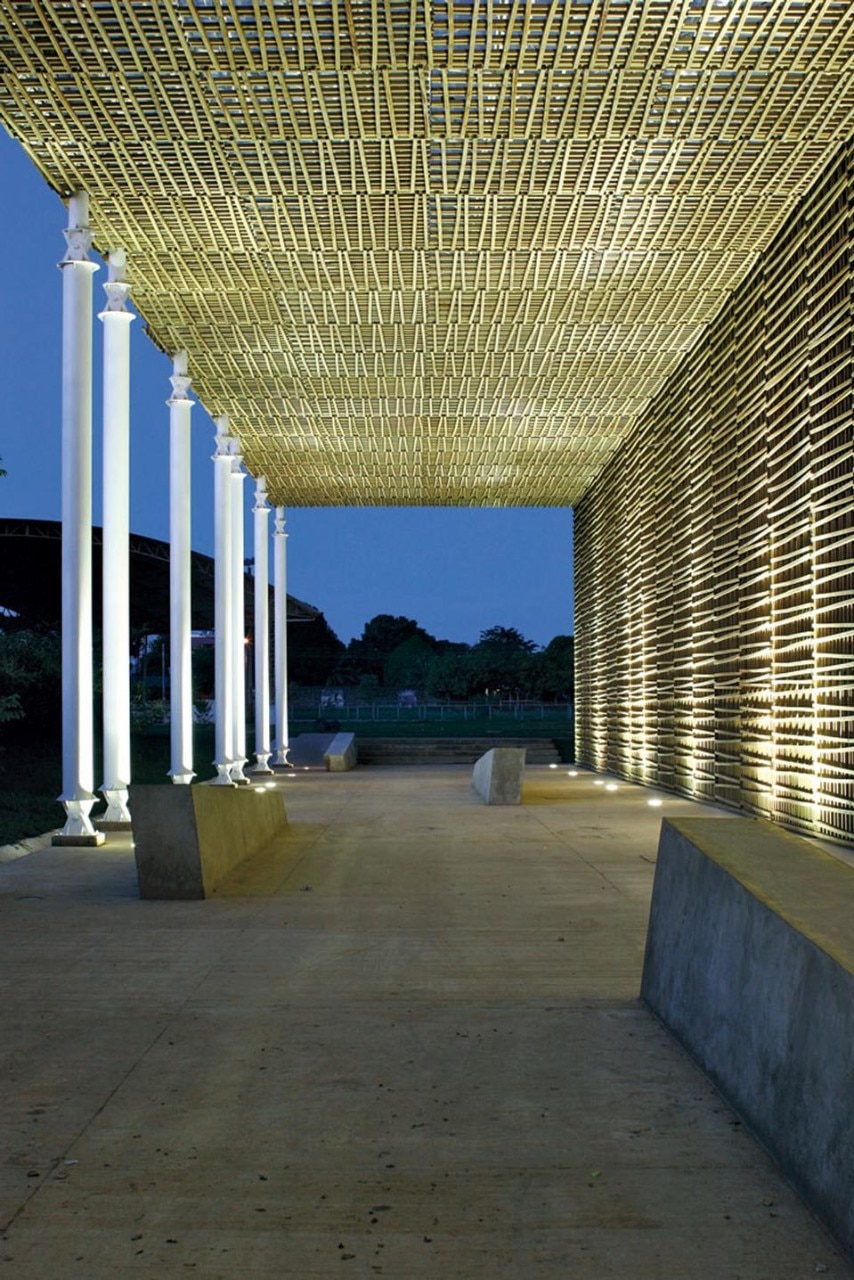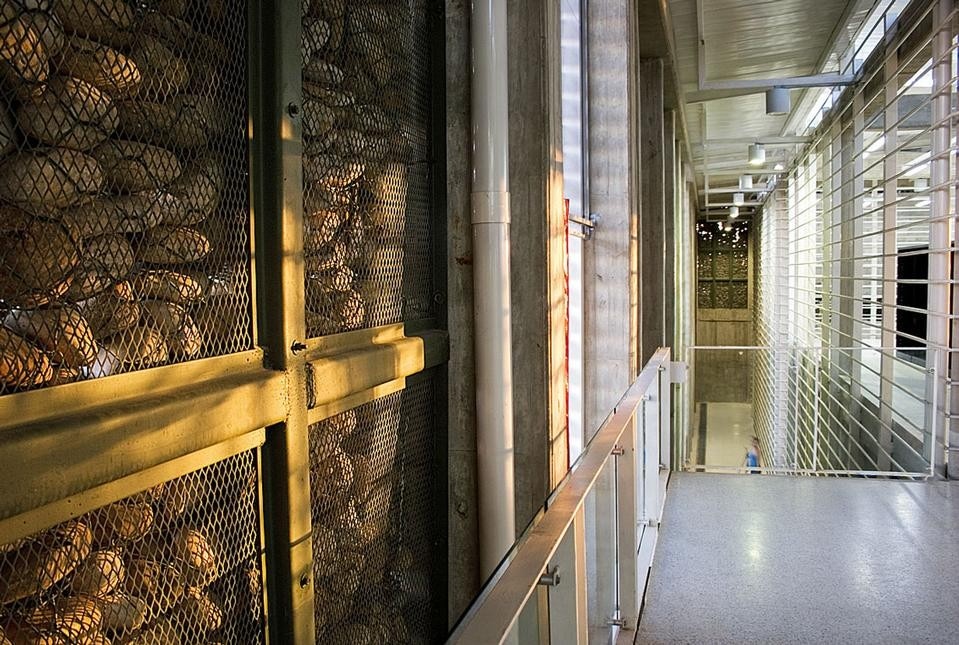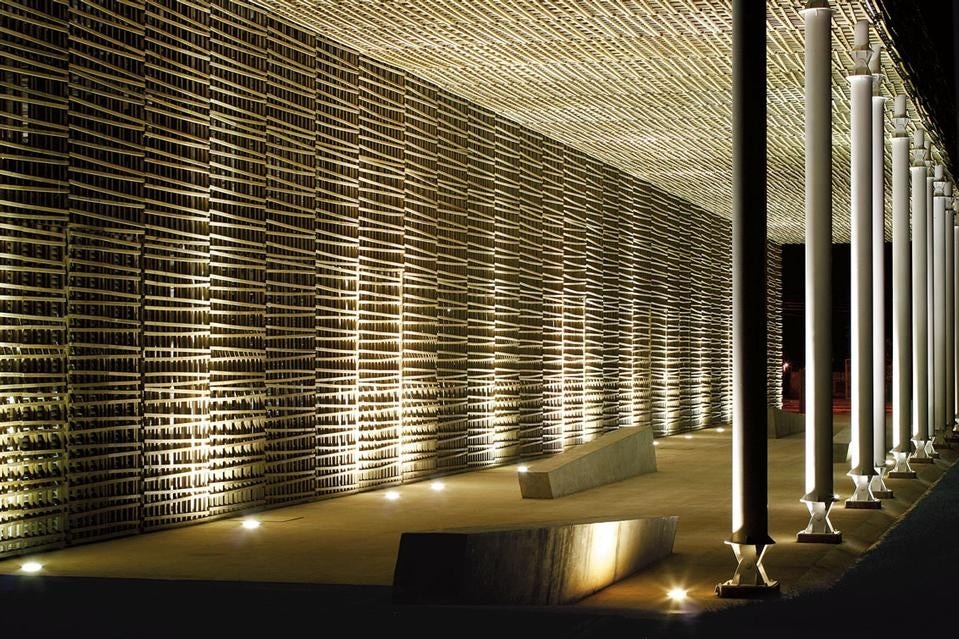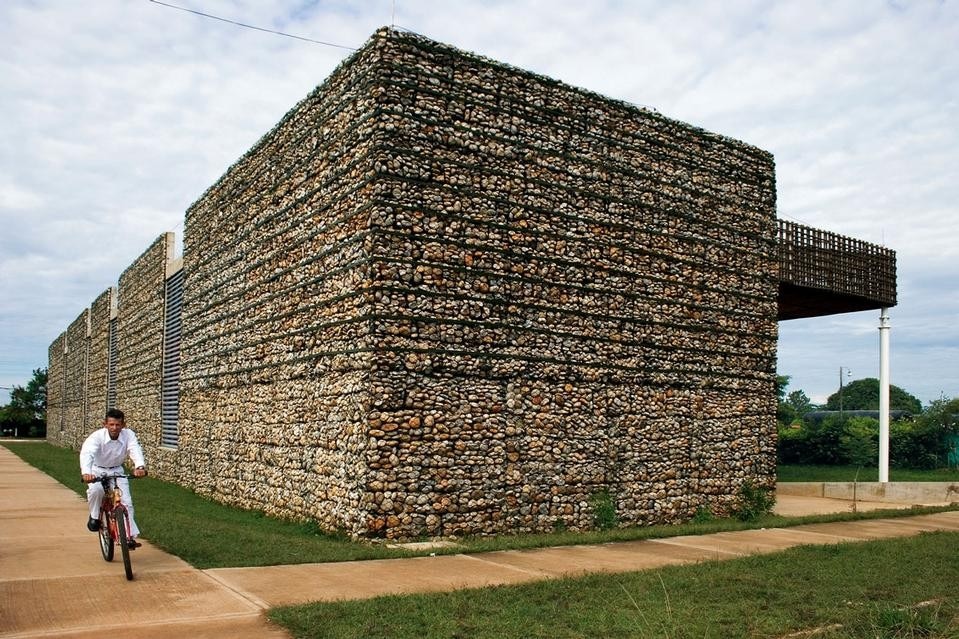It is worth mentioning the vocation for books expressed by the whole country. The Plan Nacional de Lectura y Bibliotecas – PNLB – was drawn up by public institutions to make Colombia “a nation of readers”. Besides consolidating the network of public libraries in urban areas (of which the beautiful España library in Medellín by Giancarlo Mazzanti may be taken as a symbol), the plan extends the service to rural parts of the country with the aim of “completely democratising books”. In 2007 alone the PNLB achieved its goal of setting up more than 750 public libraries.
In Villanueva, the architectural design is clearly stated in the monolithic quality of a simple volume, easily recognisable and identifiable in its urban context. In its plan the public and private dimensions are distinctly separate. The closed volume houses activities relating to the intimate sphere of reading, while the public side of the library is located under a large woven roof made of local wood, in the shape of a square opening onto the town.
The plain stone volume refers to a simple, immediate and spontaneous technology. Its stone walls, typical of rural architecture, speak an elementary constructional language. The library was in fact built with local materials (stones and pebbles from the nearby river, held together by wire netting rather than by cement and concrete), and a programme of participation in every stage of its construction was implemented under the supervision of the architects, who were thus able to deliver the library straight into the hands of the population.




Marble matters– exploring Carrara’s legacy
Sixteen young international architects took part in two intensive training days in Carrara, organized by FUM Academy and YACademy, featuring visits to the marble quarries and a design workshop focused on the use of the material.



